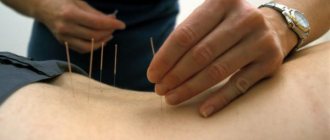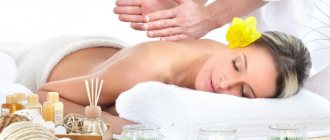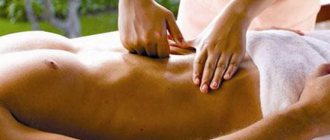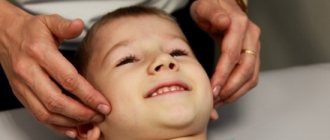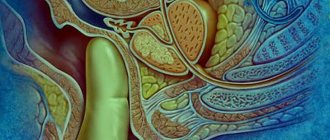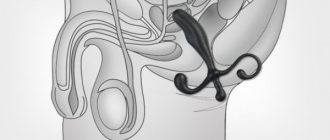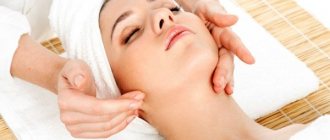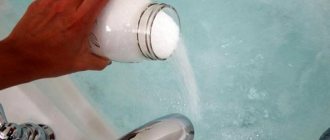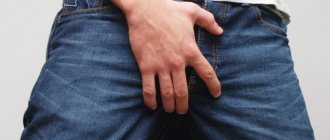A relaxing massage heals the body and spirit, relieving stress, negative emotions and relieving tension and irritation, which are mandatory companions for almost all people in the current world. Active residents of large cities are subject to especially great psychological stress.
Our ancestors also performed massages using relaxing oils and accompanied by pleasant melodies. This is how a tired body was healed. But previously, such a method of relaxation was available only to a select few. Today, everyone can do a relaxing massage.
Relaxing massage: what effects it has, indications and contraindications
Using massage techniques, you can relieve fatigue, eliminate stress, and renew your strength for further work. It is recommended for sleep problems and prolonged depression. Also, such a procedure restores the body, which is subject to frequent colds. This is an excellent prevention of influenza and ARVI. In addition, there is a positive effect on the nervous system. The procedures promote the production of the happiness hormone due to the effect on the nerve endings that are located throughout the surface of the skin.
The body is a complex, interconnected system. Therefore, along with pleasant sensations, relaxation, and tranquility, lymph accelerates, blood circulation is activated and oxygen delivery to all cells is accelerated. This is how the overall health of the whole body occurs.
Massage for depression
for depression
The positive effect of massage on the functioning of all organs and systems has been proven for a long time. Today, massage techniques are increasingly used in the complex treatment of various neuroses, chronic fatigue syndrome and clinical depression. Depending on the condition of a particular patient, a classic relaxing massage, toning and activating, as well as combined techniques using stone therapy and aromatic oils are used.
What causes the therapeutic effect of massage for depression?
In depressive states, as a rule, there is a chronic decrease in mood and general tone, slower movements, and loss of interest in social and professional activities. A person in this state is characterized by anxious and pessimistic thoughts, a feeling of self-worth, sleep and appetite disturbances. Depression is often accompanied by somatic manifestations, such as headaches, tachycardia, dyskinetic disorders of the gastrointestinal tract. With such symptoms, difficulties often arise in making a diagnosis, and symptomatic treatment does not bring results.
During a massage session, oxytocin, the so-called joy hormone, is actively released into the blood. This is the body's response to tactile influence. Oxytocin reduces the level of cortisol, which is called the “stress hormone,” normalizes blood pressure, and eliminates feelings of anxiety and fear characteristic of depressive states. In addition, the level of endorphins in the blood increases, which helps to elevate mood, normalize the psycho-emotional state and eliminate the unpleasant symptoms of depression.
Indications for the use of massage in the treatment of depressive conditions
In many cases, non-drug treatment of depression shows excellent results, especially in combination with other methods of complex influence on a person’s psycho-emotional state. Massage is recommended for conditions such as:
- seasonal or clinical depression;
- chronic fatigue syndrome;
- prolonged headaches or neuralgic manifestations against the background of a decrease in the overall tone of the body;
- insomnia, mood swings, increased fatigue, regardless of the number of hours of sleep;
- loss of appetite, decreased interest in social contacts.
The positive effect of massage on the cardiovascular, endocrine and nervous systems makes it possible to eliminate many somatic manifestations of depression without the use of medications.
Massage techniques
Depending on the symptoms of depression and the most likely causes of its occurrence, various techniques and methods of influence are used. Among the most effective techniques:
- relaxing massage of the back and neck-collar area;
- tonic massage with a general strengthening effect;
- acupressure techniques, such as shiatsu;
- reflexive foot massage;
- self-massage;
- energetic impact using sports massage techniques.
Self-massage for headaches will relieve a painful attack without the use of analgesics or antispasmodics. The technique for performing it is simple: you need to take a relaxed position, place your fingertips on the eyebrow area and gently massage the skin in the direction of the temple. The same should be done with the opposite side of the head.
Using a simple set of massage techniques for the neck and shoulders, you can regain your vigor and calm mood in just a few minutes. First the shoulder girdle is massaged, then the neck. Almost all generally accepted techniques are used for massage for depressive conditions: stroking, rubbing, pressing and effleurage.
Indications for a relaxing massage
- emotional fatigue;
- physical stress;
- muscle tone;
- flabbiness, aging of the skin (launching renewal and regeneration processes).
But even a harmless relaxing massage is best done under the supervision of a doctor, following all recommendations. Before starting a massage course, you should definitely consult a doctor.
Who needs a relaxing massage?
Modern man lives in a state of constant stress. We don’t even notice that our nerves are tense, we are in a bad mood, tired, and lack positive emotions. All this negatively affects not only our psychological health, but also our physical health. Diseases such as stomach ulcers, stroke, heart attack, and angina pectoris develop. No wonder there is a saying that all diseases are caused by nerves. We can conclude that we need to get rid of stress.
The most effective and pleasant way is an anti-stress and relaxing massage. An experienced massage therapist in a comfortable environment, accompanied by pleasant music, will relieve a person who was on the verge of a nervous breakdown a few minutes ago from excessive stress and restore the joy of life. A relaxing massage also provides psychological assistance. Sometimes we lack warmth, lack tactile sensations. A relaxing massage helps you get out of depression.
Contraindications
- 1st trimester of pregnancy – miscarriage may occur;
- cancer - warming up the body is fraught with kneading of the tumor and progression of the disease;
- elevated temperature - due to the heavy load, it will be even more difficult for the body to cope with difficulties;
- recent surgery - the body requires rest and time for wounds to heal;
- skin problems - rubbing, irritation of the skin, on the surface of which there are rashes or other unpleasant manifestations, can spread the infection throughout the body;
- tendency to be allergic to oils and scented products used during the session.
If you have no contraindications to the massage procedure, then you can conduct a session every day. After some time, you will feel mental balance and increased stress resistance.
Selection of oil and music for a relaxing massage
To achieve 100% of the effect of a relaxing massage, it is important to create the appropriate atmosphere in the room or massage room. Therefore, it is recommended to dim the lights, remove distracting objects, and prevent access by third parties.
It is performed with music - the melody must be chosen carefully so that it evokes positive emotions, relaxes, and helps you forget about problems. A measured, quiet, calming composition will do. The classics of any time and people will be optimal. You can also include birdsong, the sound of rain or the sea, but first check with the person whether he likes such sounds.
The mixture of oils is selected taking into account the client's wishes. But, each ingredient should promote relaxation. Even a couple of drops of the wrong scent can invigorate instead of calm.
There are standard oils that improve hand glide and have a beneficial effect on the skin. And additional aromas are added to this base. Base oils include:
- olive is a universal ingredient that protects against inflammation, does not block pores and is hypoallergenic;
- almond – well absorbed into the skin, has an excellent lubricating effect;
- Jojoba oil – its antibacterial properties allow it to be used even on problem skin. The product has a long shelf life;
- apricot – characterized by a calming effect, the absence of residual greasy residue on the body;
- peach – activates blood circulation and speeds up metabolism.
Lavender, orange, chamomile, lemon balm, and bergamot notes are suitable as auxiliary components for the mixture. Valerian and patchouli are also appropriate.
What movements are performed for a relaxing massage?
Relaxation massage techniques begin with light movements, the task of which is to relieve tension from the muscles and prepare the body for further effects. The performer's hands must be pre-warmed and relaxed. The transition between techniques is gradual, without sudden changes in techniques. When moving your hands in the upward direction, the upper part of the palms is used, and downwards, the outer ones are used. The session ends with the same techniques as at the beginning. The first couple of relaxing massage procedures should be short - 15 minutes is enough to achieve the first result.
Basic hand movements:
- stroking - wide or narrow, with the whole hand or just the edge of the palm. They are recommended at the beginning and end of the procedure;
- kneading – place one hand on top of the other to increase pressure on the body. Use the pads and phalanges of your fingers;
- rubbing - move the skin at an angle, moving your palms in a zigzag;
- patting - local impact on certain muscles through weak blows with the outer edge of the palms;
- vibrations - intense circular movements to shake the skin.
Relaxation massage and its main types
Depending on the purpose, you can massage the whole body or a specific part of it. Each zone has its own characteristics and a clear technique of execution.
- General. Start kneading your back with light movements and gradually increase their intensity. Then massage your arms and legs one by one, moving from top to bottom. This will allow you to warm up, first of all, large muscle groups, and then gradually move on to small ones. The session should be completed by treating the chest, abdomen, neck, and head.
- Back. Start with calm, leisurely strokes (3-4 strokes). Then do a short rub of the entire back. To make it more comfortable, stand to the side of the massage table. But while moving, try not to take your hands off your body. Otherwise, the resulting relaxation effect will be lost. Move on to kneading - these are the main movements. Change the intensity and duration of massage effects, taking into account the wishes of the person receiving a relaxing massage. Then perform a couple of vibration techniques and pats, and end the session with 2-3 strokes.
- Legs. Start massaging your thighs and knees first. Stroke and rub the skin, moving in an upward direction. Then work your shins, move on to your feet. Give them 3-4 minutes to process. Pressure and point movements are recommended. When performing foot massage techniques, you should not use stroking. The person being massaged will feel the touch as if it were tickling.
- Hands. This type is performed by analogy with the legs. Start the procedure with the elbows, move to the shoulders, stroking the skin. Then stretch your palms, hands, phalanges. Regular kneading and point pressure will do.
Relaxation technique has the main goal of relaxing and resting the person receiving it. Therefore, do not overdo it while performing. Especially if you have no experience, this will be your first time conducting a session. The main thing is that the person being massaged gets maximum pleasure and effectively relaxes. And the healing effect of the procedure may fade into the background.
To avoid dizziness, nausea, and other unpleasant sensations, you should not get up suddenly after finishing the massage. The person being massaged should lie down for a while in a calm state, come to his senses, even sleep if possible and willing. A cup of herbal tea will be a pleasant bonus. This will consolidate the result and allow the body to reach the apogee of nirvana.
Choose your training option
| Group | Term | Number of hours | Days | Time | Teacher | Price |
| Anti-stress massage (individual) | Your schedule | 12 academic hours | Your days | To be confirmed | Alexey Kozlov | 13800 rub. |
Author of the article:
Practicing: 15 years, Teaching: 8 years
Types and techniques of execution
Stress is a common phenomenon that manifests itself not only in mental problems, it entails disruption of the functioning of all body systems. The types of anti-stress massages are numerous; they were founded and developed in different parts of the world, among different nationalities, which entails a number of features. Prominent representatives of such species are:
- Tibetan massage has an ancient history. The technique consists of applying individually selected oils to the entire surface of the skin and thoroughly treating each area of the body. Patients' joints are also warmed up using the palms of their hands, which has a beneficial effect on the health of the joint parts.
- Thai massage has such a feature as it is performed with the help of all parts of the massage therapist’s body, and sometimes with the whole body. It is point-specific and is directly connected to the human nervous system.
- Chiromassage. The most favorite technique of creative massage therapists, as it welcomes initiative and experimentation. This is the perfect combination of oriental and classical massage practices. Chiromassage is performed using fingers, palms, elbows and forearms. This technique has a positive effect without any additional equipment; it is a hand massage. This type of massage becomes an excellent anti-stress and additional pleasure for the patient. In addition, it has a powerful cosmetological and healing effect.
- Stone therapy. The massage therapist relieves the patient's stress by applying warm stones to painful areas and then replacing them. When exposed to special stones (marble or basalt rocks), narrowing and dilation of blood vessels occurs, which are strengthened as a result of this procedure. Stone therapy is a good anti-stress treatment that is gaining great popularity all over the world.
What type of anti-stress massage to choose will be helped by specialist doctors after certain checks and examinations, but if there is no time to consult doctors, experienced massage therapists will be able to determine the source of the disease and offer options for eliminating it.
